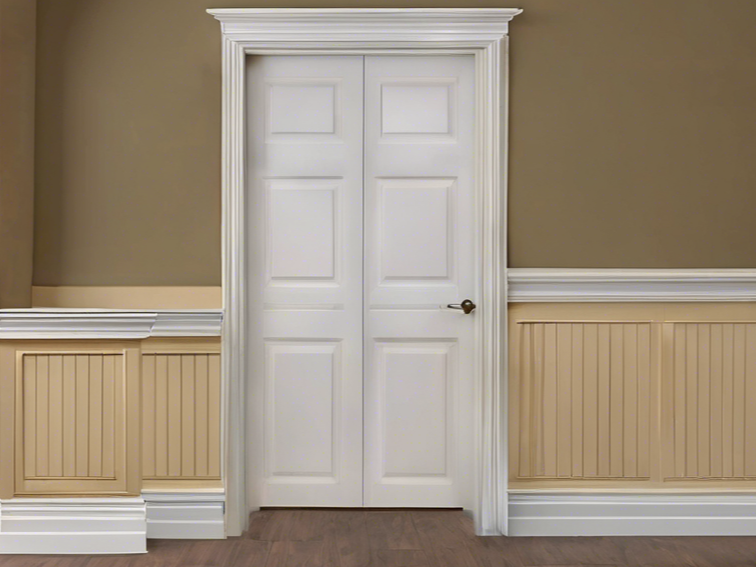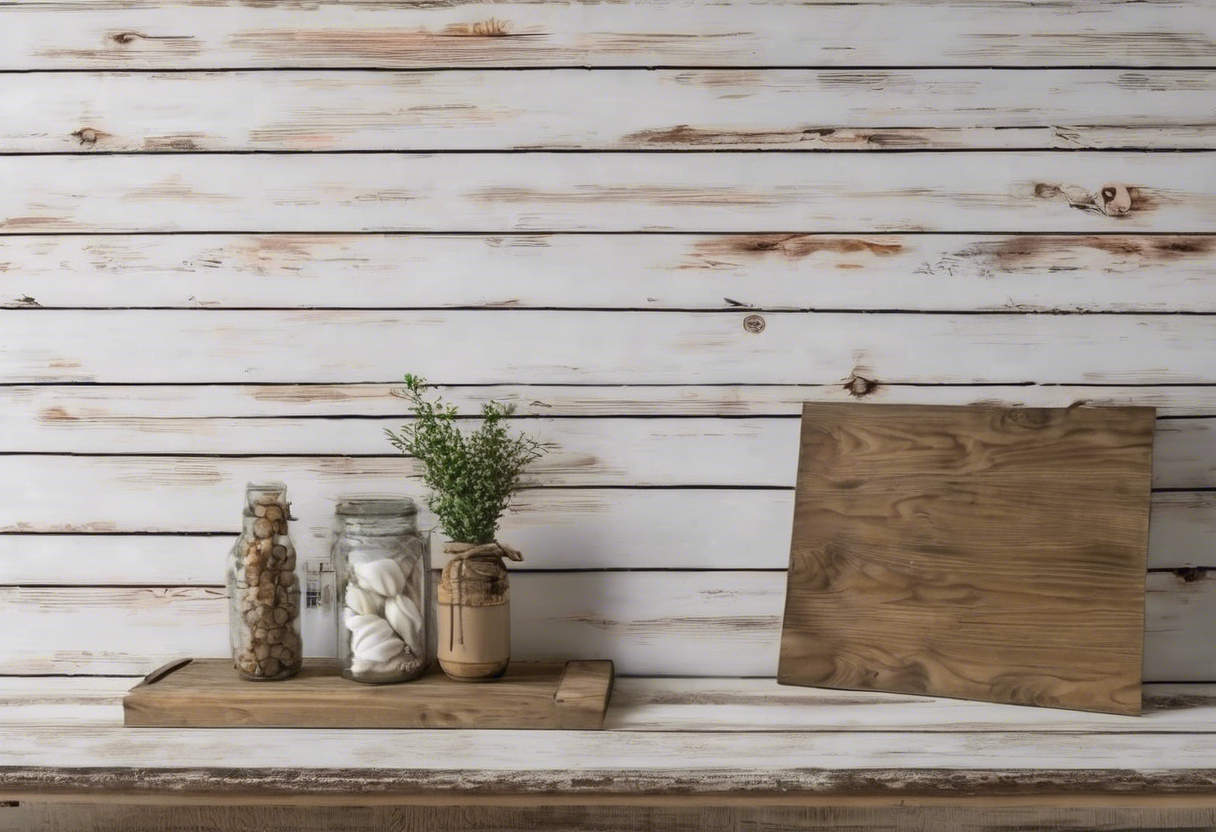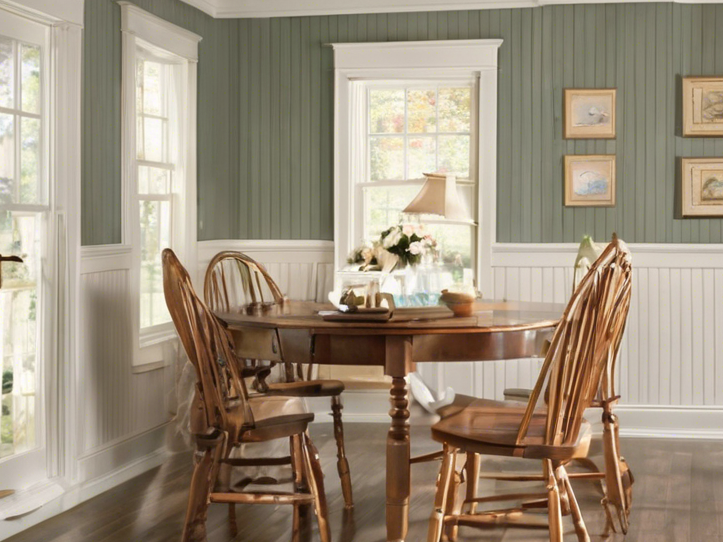Wall Paneling Types

Wall Paneling Types: Adding Texture and Character to Any Space
Wall paneling has been a staple in interior design for centuries, evolving from purely functional origins to becoming a versatile design element that can transform any room. From the classic elegance of wainscoting to the contemporary appeal of geometric panels, wall paneling offers endless possibilities to add dimension, texture, and personality to your home.
Wainscoting: Timeless Elegance

Wainscoting
Wainscoting originated as a practical solution to protect walls from chair damage, but today it's celebrated for its decorative appeal. Typically covering the lower third of a wall, traditional wainscoting features raised panels with intricate molding. However, modern interpretations can vary in height and style.
Wainscoting works beautifully in dining rooms, entryways, and living spaces, creating a sense of architectural heritage. For a contemporary twist, consider painting your wainscoting in bold colors against neutral walls, or vice versa.
Shiplap: Coastal Charm

Shiplap paneling
Popularized by farmhouse-style designs, shiplap consists of horizontal wooden boards installed with a slight gap between each plank. Originally used in shipbuilding (hence the name), these overlapping boards create subtle shadow lines that add texture and visual interest.
Shiplap brings a casual, breezy feel to any space, making it perfect for coastal-inspired or rustic interiors. While traditionally white, shiplap can be stained or painted in any color to suit your design aesthetic. It works beautifully in bathrooms, bedrooms, and as accent walls in living spaces.
Board and Batten: Architectural Definition

Board and batten wall paneling
Board and batten combines wide boards with narrow wooden strips (battens) placed over the seams. This style originated as an exterior siding technique but has found its way indoors, offering a distinctive dimensional effect.
The vertical orientation of board and batten creates an illusion of height, making it ideal for rooms with low ceilings. It's a versatile option that can be adapted to various design styles, from farmhouse to modern. Consider board and batten for entryways, dining rooms, or as an accent wall in bedrooms.
Beadboard: Cottage Core Appeal

Beadboard
Beadboard features narrow wooden planks with distinctive rounded grooves (or "beads") between each board. This traditional paneling style brings a charming, cottage-like feel to any space.
Originally popular in Victorian-era homes, beadboard has maintained its appeal thanks to its ability to add texture without overwhelming a space. It's particularly well-suited for bathrooms, kitchens (as backsplashes or on islands), and laundry rooms. Beadboard can be installed floor-to-ceiling or as wainscoting for varied effects.
Raised Panel: Formal Sophistication

Raised panel walling
Raised panel walling represents perhaps the most traditional form of decorative wall treatment. Featuring panels with beveled edges that create depth and shadow, this style brings an air of formality and luxury to interiors.
This paneling type works beautifully in studies, formal dining rooms, and master bedrooms. While traditionally crafted from wood, modern variations include medium-density fiberboard (MDF) options that offer the same look with greater affordability and stability.
Tongue and Groove: Seamless Simplicity

Tongue and Groove paneling
Tongue and groove paneling features boards with a protruding "tongue" on one edge that fits into a corresponding groove on the adjacent board, creating a seamless connection. This installation method results in a clean, gap-free finish.
The versatility of tongue and groove makes it suitable for both traditional and contemporary spaces. It can be installed vertically for a modern look or horizontally for a more traditional feel. This paneling style works particularly well in bathrooms, kitchens, and as ceiling treatments.
Geometric Panels: Modern Statement

Geometric wall paneling
For those seeking something more contemporary, geometric panels offer a bold alternative to traditional styles. These designs feature geometric patterns like diamonds, hexagons, or custom abstract designs that create striking visual interest.
Geometric paneling serves as functional art, transforming walls into focal points. This style pairs beautifully with minimalist furniture in modern and mid-century inspired spaces. Consider installing geometric panels behind your bed, in living areas, or in home offices for maximum impact.
Practical Considerations
When selecting wall paneling, consider:
Material
While solid wood offers authenticity, MDF and PVC alternatives provide cost-effective, moisture-resistant options.
Room function
Moisture-resistant options are essential for bathrooms and kitchens.
Ceiling height
Vertical panels can make ceilings appear higher, while horizontal installations can make rooms feel wider.
Maintenance
Some paneling types require more upkeep than others, particularly in high-traffic areas.
Conclusion
Wall paneling offers a remarkable opportunity to add architectural interest and personal style to your home. Whether you prefer the classic appeal of wainscoting, the rustic charm of shiplap, or the bold statement of geometric panels, there's a paneling style to suit every taste and interior design approach. Beyond aesthetics, the right paneling can also improve a room's acoustics, provide insulation, and protect wall surfaces from damage – making it both a beautiful and practical addition to any home.